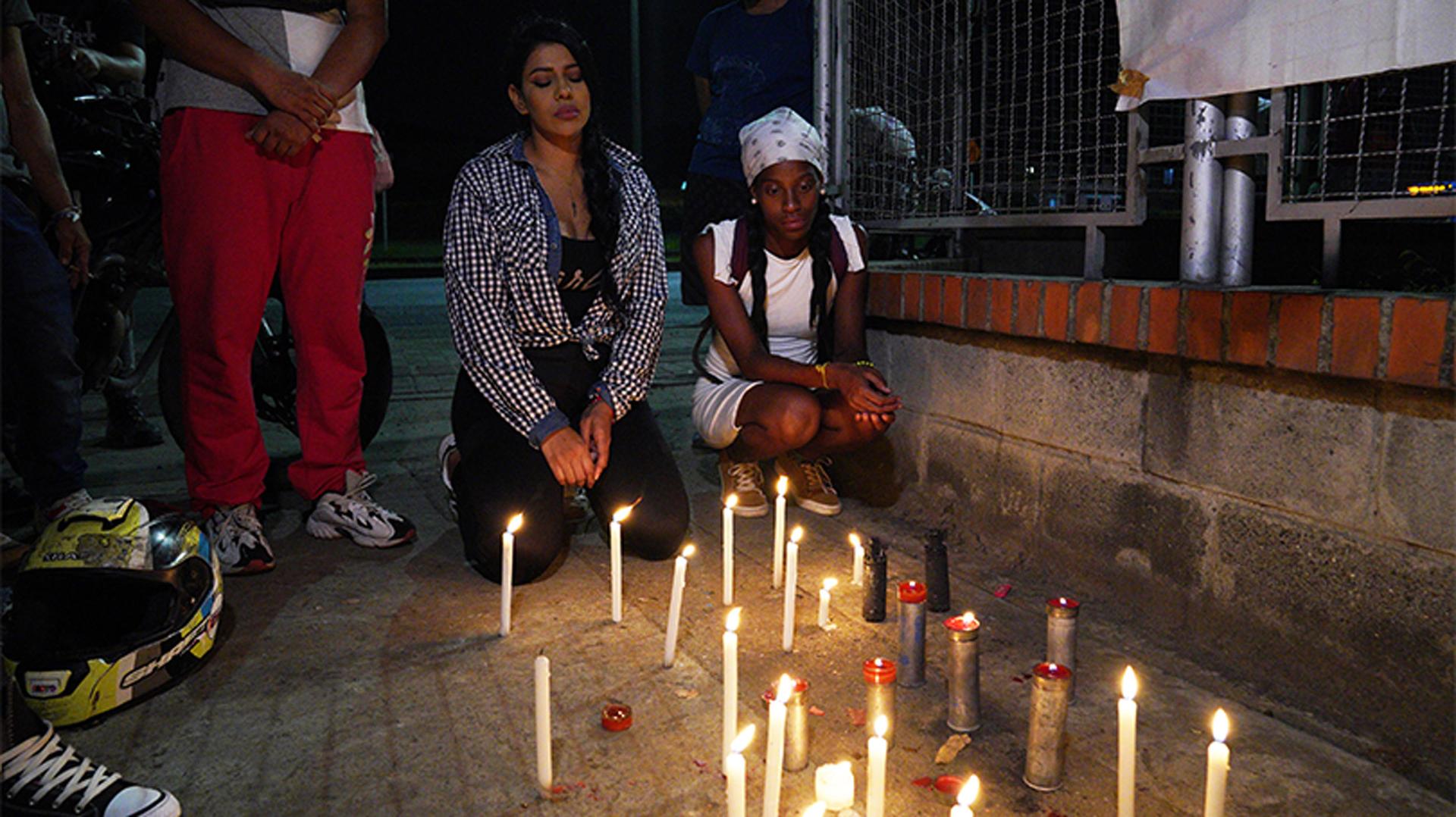At a small park in the Colombian city of Cali, friends and family of Nicolas Guerrero staged a concert to commemorate the first anniversary of his death.
The graffiti artist was shot in the head during a peaceful protest along one the city’s main avenues, with witnesses saying that the 27-year-old was killed by police who tried to clear the area using tear gas and live rounds.
Related: Body armor factories in the Americas are sending gear to war-torn Ukraine
But so far, prosecutors haven’t pressed charges against anyone for Guerrero’s death. His mother, Laura Guerrero, said this is why the family is organizing protests in his memory.
“I don’t want more mothers to have to bury their children. We need justice, so that this doesn’t happen again.”
“I don’t want more mothers to have to bury their children,” she said outside an amphitheater where a documentary on Guerrero’s death was screened. “We need justice, so that this doesn’t happen again.”
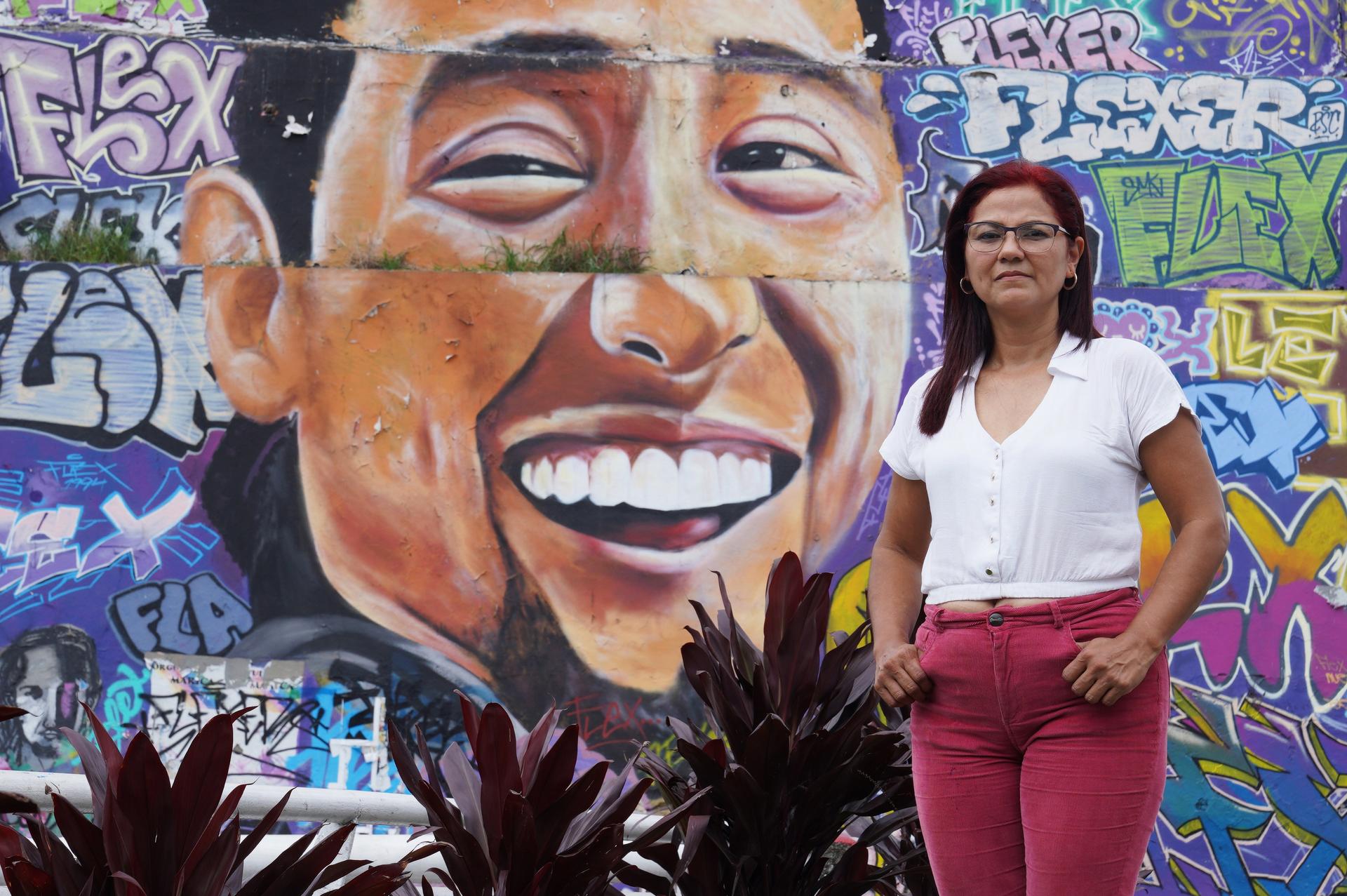
Over a year has passed since protests broke out on April 28, 2021, against tax hikes and income inequality in Colombia, which resulted in the deaths of more than 50 people.
President Iván Duque had announced a proposal to increase income taxes and sales taxes on many segments of the population, which had already been hit hard by the pandemic.
Relatives of young activists murdered during the protests said that police are to blame for many of those deaths. And they’re taking to the streets once again to seek justice.
“For months, we have been called vandals or terrorists. We don’t only need justice, but for the memory of our loved ones to be dignified.”
“For months, we have been called vandals or terrorists,” said Crisol Sanchez, the sister of Daniel Sanchez, a 16-year-old killed also during a protest in Cali last year. “We don’t only need justice,” she added, “but for the memory of our loved ones to be dignified.”
For almost two months, protesters across the country blocked roads and staged marches to demand the withdrawal of Duque’s tax proposal — which was quickly revoked — and then to voice their frustration with police violence, unemployment and other problems that they blamed on the president’s conservative government.
Related: TikTok fame allows Colombian band Monsieur Periné to do its own thing
In Cali, Colombia’s third-largest city with some of the biggest income disparities, protesters blocked the entrances to some neighborhoods and took over a few police stations, after police violently dispersed the first wave of protests.
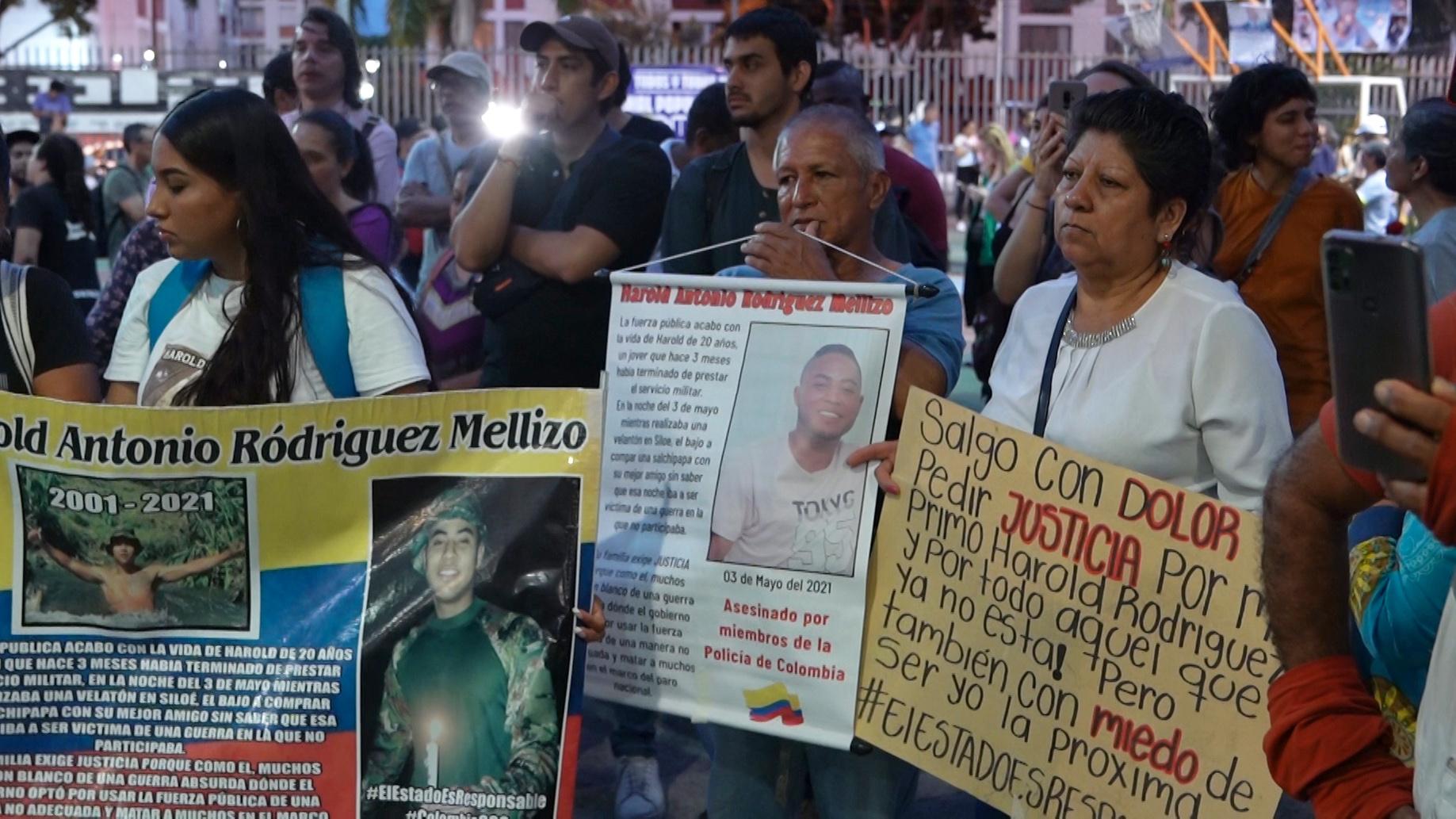
The city of about 2 million people, which has a large Afro-Colombian population, experienced some of the worst protest-related violence, with police and radical groups of protesters, who used molotov cocktails, clashing regularly in May and June.
Human Rights Watch says it has collected evidence indicating that police killed at least 25 people across the country at the time.
Temblores, a Colombian organization that monitors police abuses, estimates that police killed 40 people there. Three policemen were also killed during the unrest.
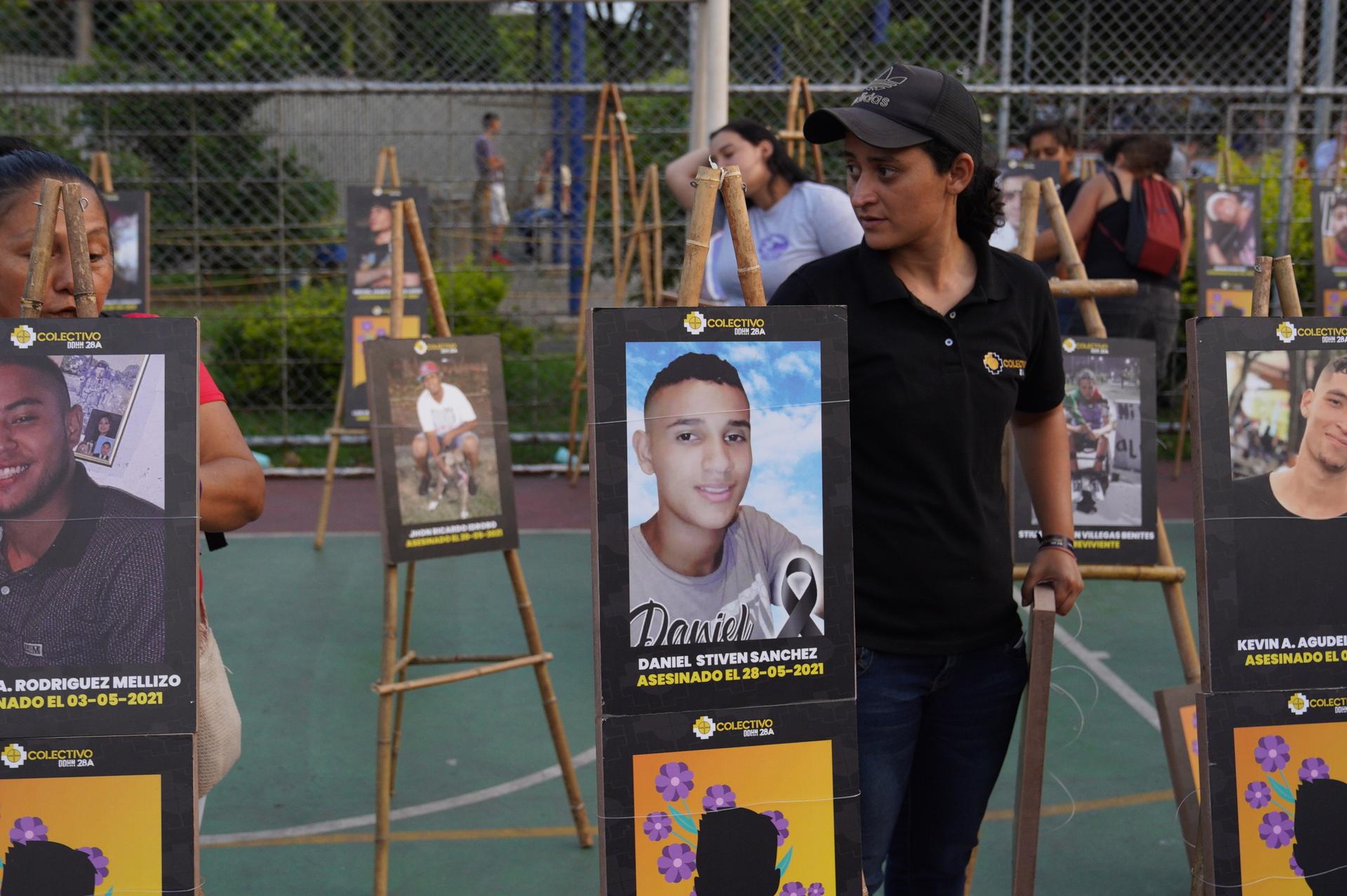
So far, only five police officers are facing trial for last year’s protester deaths, but no one has yet been convicted. And government critics say the inaction highlights the need to make changes to Colombia’s justice system.
The national prosecutor’s office, or Fiscalia, is in charge of investigating police officers who commit human rights abuses. But its director is hand-picked by the president.
Related: This Colombian company is trying to convince farmers to use beetle poop fertilizer
“That makes it very hard to have independence and autonomy within the criminal justice system,” said Juliana Bustamante, a law professor at the University of Los Andes in Bogotá.
While prosecutors are quick to investigate protesters who committed crimes like looting, injuring officers or destroying public property, they have been reluctant to go after police officers who attacked protesters, because it would be bad for the government’s image, she said.
In Nicolas Guerrero’s case, prosecutors still haven’t conducted a forensic test on the bullet that killed him, to verify whether or not it comes from a weapon used by police.
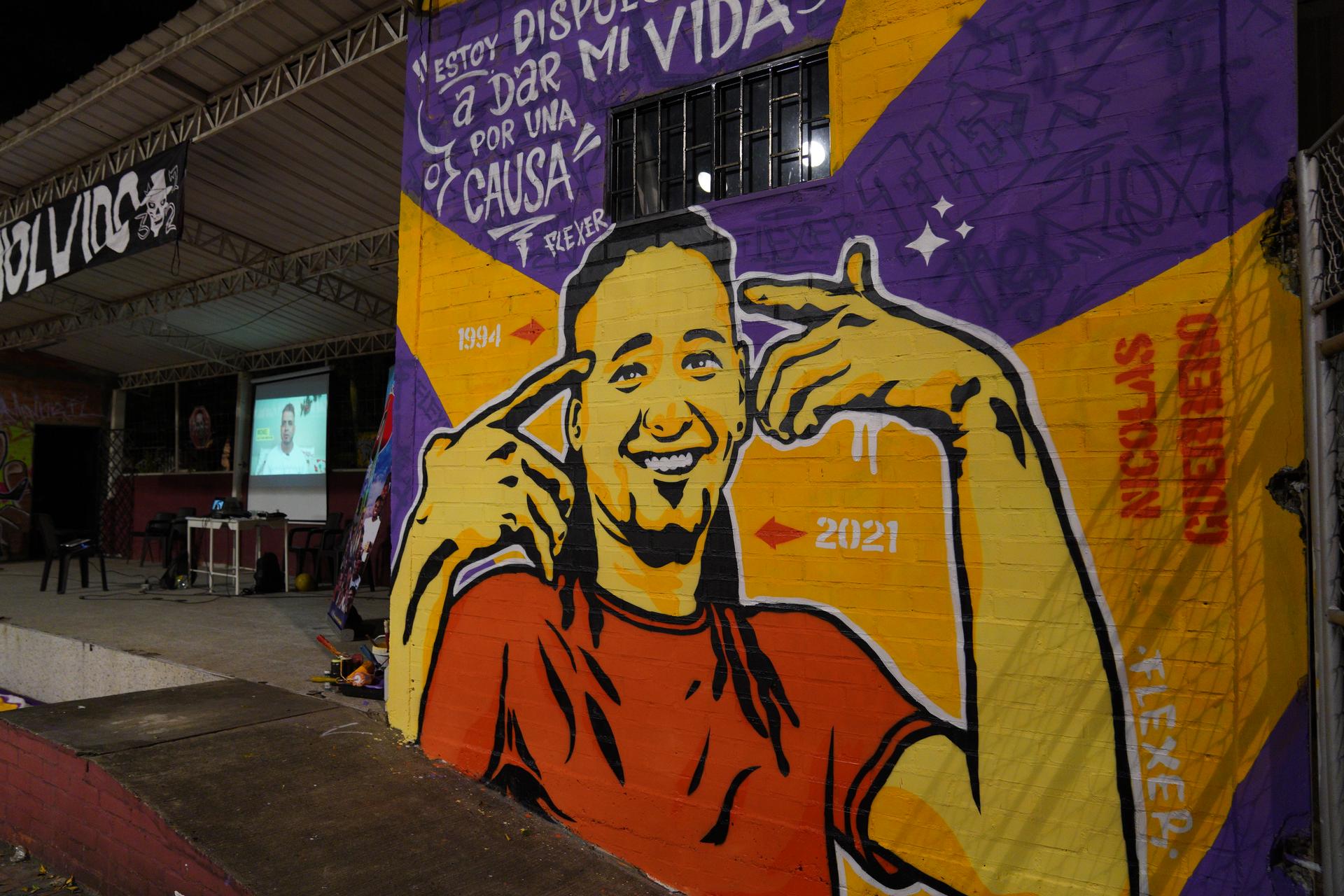
And it’s not the only case where they appear to be dragging their feet.
Abelardo Aranda said his son Michael Andres was shot in the stomach during a protest on May 28, 2021, in Siloe, a working-class area of Cali. And no one has been indicted so far in the case of the 24-year-old’s death either.
“When someone who works for the government is murdered, you even see them offering rewards. Instead, when our children die, the government says they were vandals or guerrillas.
“When someone who works for the government is murdered, you even see them offering rewards,” Aranda says. “Instead, when our children die, the government says they were vandals or guerrillas.
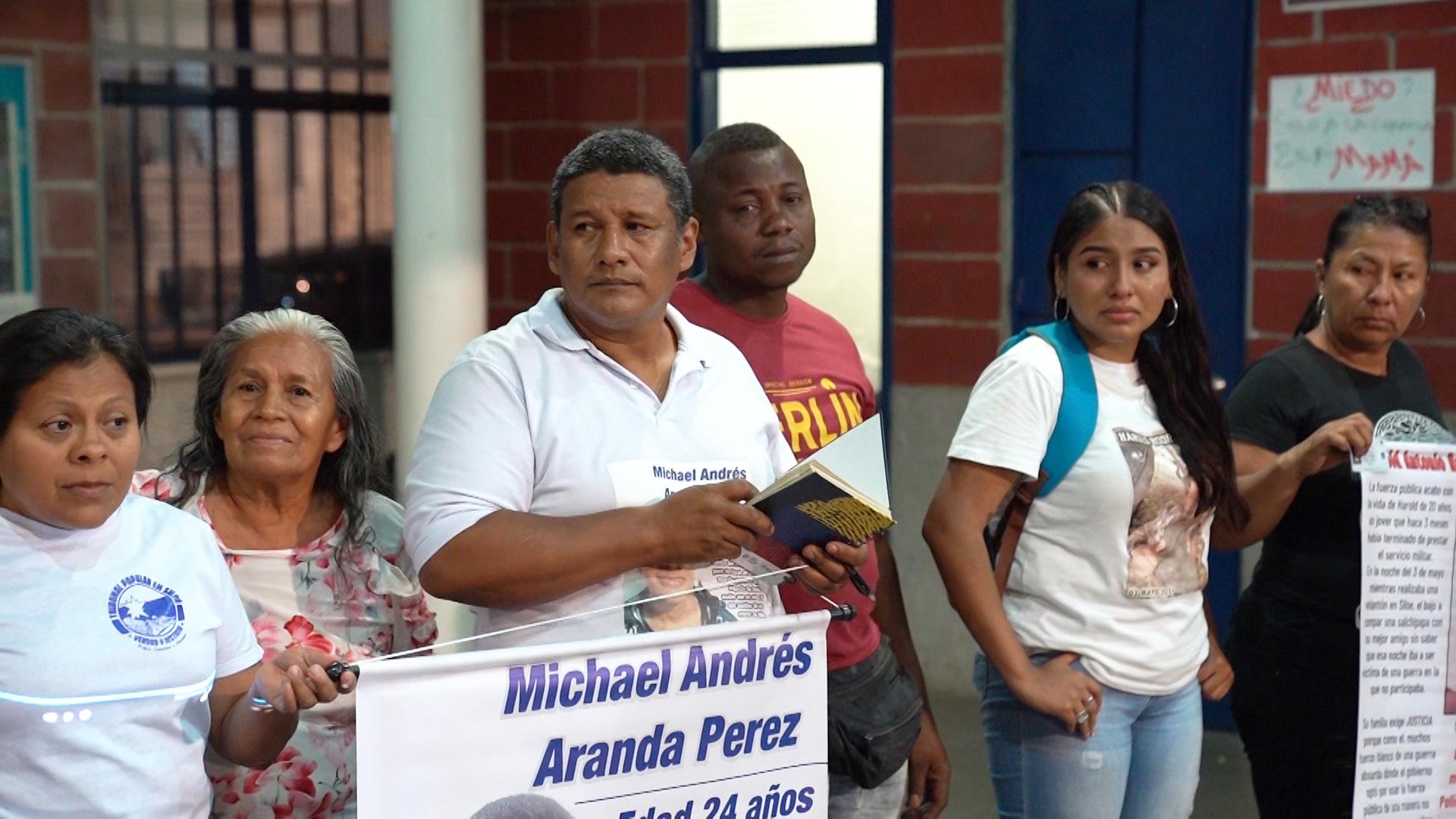
Aranda and other parents of youth killed during the protests recently launched an initiative known as the Siloe People’s Tribunal, which plans to collect oral testimonies and videos taken by witnesses at the protests.
The tribunal is organized by human rights groups and led by an international panel of academics who will review the evidence and issue a symbolic ruling in September.

It doesn’t have the power to arrest anyone or to order any forensic examinations. But victims of police violence are hoping that this “people’s tribunal” will put more pressure on authorities to investigate last year’s crimes.
“For us, it is a relief to be in a place where we are listened to,” Aranda said. “And it’s good to be with people who will help us move these cases forward.”
